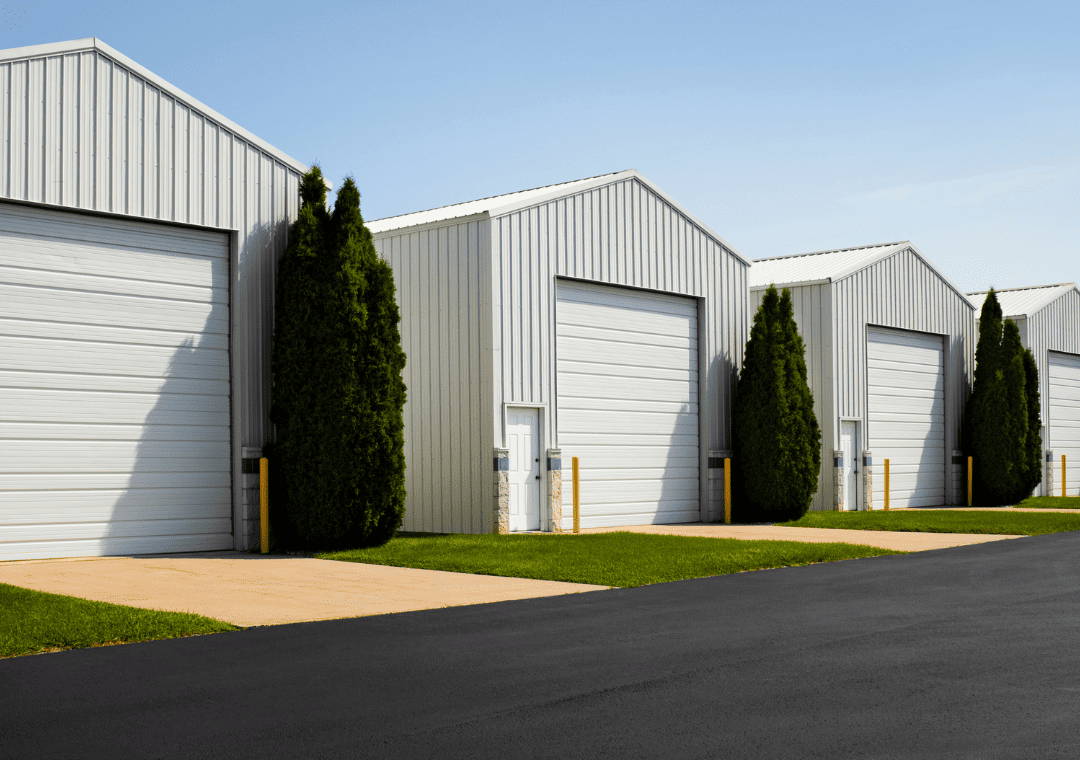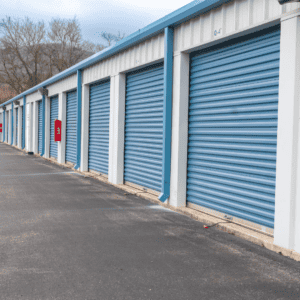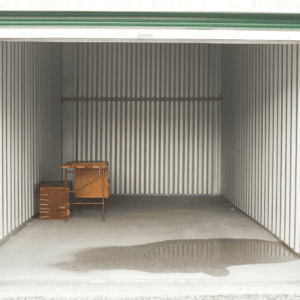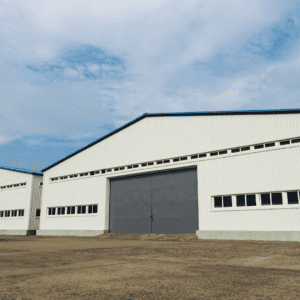How to Optimize Warehouse Storage for Profit
- September 22, 2025
- Commercial
Warehousing and storage solutions are often the backbone of successful logistics and moving companies. However, for many small businesses and property…
Read More
Investing in commercial real estate is a time-tested strategy for building long-term wealth. One appealing niche within the commercial sector is storage units. Commercial storage offers investors stable demand, relatively low maintenance costs, and tax advantages compared to other real estate assets
Self-storage facilities have become an increasingly popular commercial real estate investment in recent years. Industry research shows steady growth, with over 58,000 self-storage facilities across the United States generating nearly $40 billion in annual revenue. Demand remains high thanks to downsizing trends, mobility, and a need for extra space. Unlike volatile sectors like retail and office, storage tends to perform well even in economic downturns.
Storage facilities also require less hands-on management than other commercial properties. With automated access and payment systems, remote monitoring, and minimal turnover costs, they can generate mostly passive income for investors. Additionally, depreciation deductions lead to favorable tax treatment.
For all these reasons, storage investments are an appealing option for those looking to add commercial real estate to their portfolio. This guide will explore the ins and outs of investing in storage units to help you evaluate the profit potential.
There are several different types of commercial storage units that investors can choose from based on the needs of potential tenants in their area. The most common options include: Self-storage units – These are the traditional small storage spaces for personal items or small business inventory. Unit sizes typically range from 5×5 to 10×30 feet. According to Storage King, climate controlled units help protect sensitive items from temperature fluctuations.
RV and boat storage – Larger parking spots to accommodate oversized vehicles. Some facilities offer covered or enclosed units with 24 hour access according to Extra Space. These cater to owners who lack space at home.
Warehouse units – For businesses that need ample room for inventory, equipment, and workspace, Class-A warehouses can range from 5,000 to over 200,000 square feet per an article on StoragePug. These provide secure dock access for trucks.
The optimal mix of unit types depends on demographics, local industries, and seasonality. All units should feature secure, 24/7 accessibility such as perimeter fencing, video cameras, and keypad access. Climate controlled units also help attract tenants willing to pay higher rates.

When looking to purchase commercial storage units as an investment, there are several key factors to take into account:
Research local market conditions like population growth, competition from other facilities, and demographic demand drivers. Buy in areas with steady demand and limited new supply coming online.
There are a variety of costs involved in purchasing and operating commercial storage units. The initial purchase costs include the down payment, which can range from 20-25% for a commercial real estate loan. The loan payments themselves can vary depending on the amount financed, interest rate, and loan terms, but expect monthly payments for 15-30 years.
Property taxes also need to be budgeted for, which vary by location but often range from 1-2% of the property’s assessed value annually. Insurance costs need to cover building, property, and liability insurance. Budget approximately $0.15-0.30 per square foot annually for insurance based on factors like location and facility size according to https://www.storable.com/resources/learn/storage-facility-construction-cost/.
Ongoing operating expenses include utilities like electricity, water, gas, trash collection, etc. These vary based on climate, facility size, occupancy, and other factors. But expect to budget several thousand dollars annually for utilities and services. Management fees are another expense, typically 4-8% of rental revenue. Lastly, maintenance and repairs should be budgeted annually as well, ranging from 5-15% of gross revenue.
Overall, an investor needs to realistically budget for all these ongoing purchase and operating costs when assessing the income potential of a commercial storage investment.

The income potential for commercial storage units can be quite lucrative if managed properly. The main revenue streams come from rental income and occupancy rates. Average rental rates can range from $50-150+ per month depending on unit size and features. Larger units over 300 sq ft may rent for $200-300 per month. With a storage facility of 100 units total, the annual rental income at 75% occupancy could easily reach $450,000-650,000.
Maximizing occupancy rates is crucial for profitability. Well-run facilities in prime locations can maintain 85-95% occupancy. This provides a reliable stream of income even during off-peak seasons. Occupancy can be improved by offering move-in specials, online reservations, and strong marketing.
Additional income can be generated through ancillary products and services. Offering truck rentals for moving and hauling generates added revenue. Providing moving supplies like boxes and tape creates incremental sales. Some facilities also sell insurance plans to give tenants peace of mind.
According to a case study from ProjectionHub, a 50,000 square foot storage facility with 500 units in Dallas produced over $800,000 in rental income annually. The owners were able to net over $550,000 before taxes and expenses. This demonstrates the strong earning potential of well-managed storage units in major metro markets.
As with any real estate investment, investing in commercial storage units does come with some risks that need to be carefully evaluated. Some of the key risks to consider include:
The performance of a storage facility can be heavily dependent on the health of the local economy. During recessions when unemployment rises, demand for storage units may decline as people downsize and vacate units. It’s important to assess the diversity and stability of the local economy before investing.
Facilities in areas prone to natural disasters like floods, tornadoes, or hurricanes can face damage or destruction from these events. Investors should research the history of natural disasters in the area and consider any precautions or insurance to mitigate this risk.
Storage units can be targets for break-ins, theft, and vandalism. Robust security features like cameras, coded access gates, and regular patrols can help deter crime at a facility. Insurance policies should also cover potential losses from theft or damage to units.
If demographic or economic changes in the area reduce demand for self-storage, occupancy rates and rental income can suffer. Tracking area trends and choosing locations with reliable demand can help avoid or minimize this risk.
Costs like property taxes, insurance, utilities, and maintenance can rise over time, squeezing profit margins. Understanding projected expense growth and building financial buffers into the investment pro forma provides important protection.

For those looking to get started with commercial storage investments, there are a few key steps to take:

Real-world examples can provide helpful insight into the profit potential and investment returns of commercial storage units. Here are some case studies of successful storage investments:
Experienced storage investors recommend several best practices for maximizing income from your units:
Hire a property management company to handle leasing, rent collection, maintenance, etc. This frees up time for busy investors.
In summary, investing in commercial storage units can provide stable passive income, diversification, tax advantages, leverage from financing, and long-term appreciation. The key factors to analyze are location, occupancy rates, local market conditions, and unit mix. While commercial real estate does carry risks like changing demand and rising expenses, proper due diligence and management can mitigate these risks.
For investors looking to get started, the next steps are to research markets, find properties that meet your criteria, consult professionals about financing and management, and create pro formas to analyze potential returns. With proper analysis and preparation, commercial storage units can be an excellent addition to an investment portfolio.
The benefits of diversification, leveraged returns, tax benefits and stable cash flow make commercial storage units worth considering for savvy investors looking to build long-term wealth through passive income. This guide provides the foundations, now it’s time to take action and begin evaluating properties in your local market.
Join The Discussion